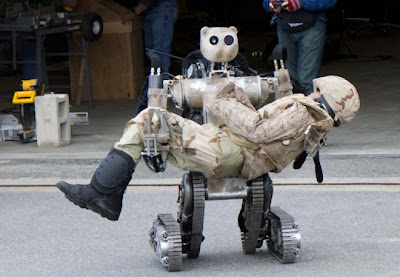Airmule
Wanted: Robots To Evacuate Wounded Soldiers -- Popular Mechanics
A Pentagon study looks at the future technology for evacuating wounded soldiers, including UAV rescuers, human hibernation, and more.
On the battlefield of the future, a wounded soldier could be scooped up by a robot, placed in a specially equipped drone, and then flown to the closest manned-medical center, where he or she is diagnosed with automated equipment that can deliver treatment without human intervention. Of course, that brings up the question: If robots can do all that, will there be human soldiers on the battlefield?
Read more ....
My Comment: A summary of what is in the works.






